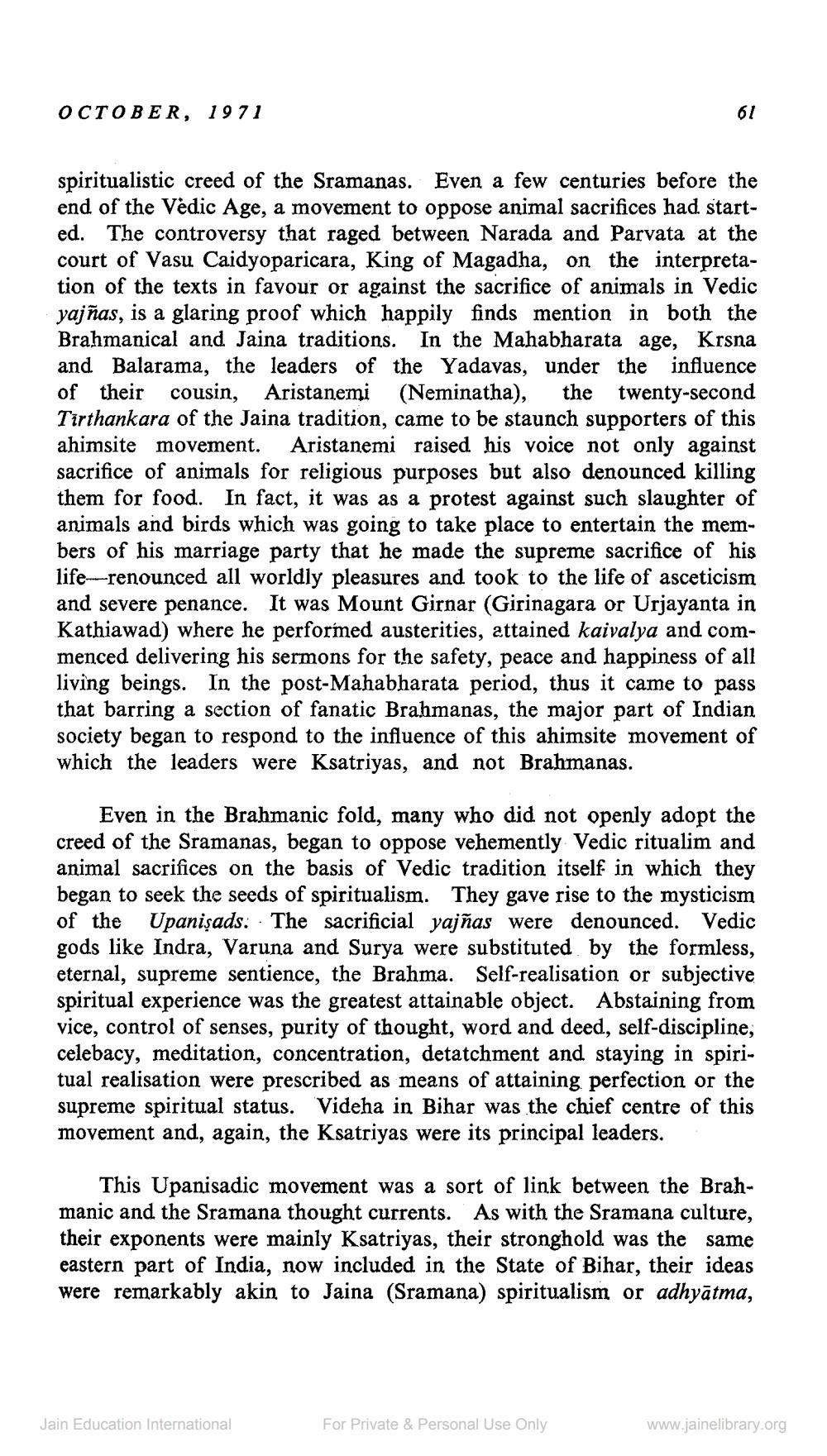________________
OCTOBER, 1971
spiritualistic creed of the Sramanas. Even a few centuries before the end of the Vedic Age, a movement to oppose animal sacrifices had started. The controversy that raged between Narada and Parvata at the court of Vasu Caidyoparicara, King of Magadha, on the interpretation of the texts in favour or against the sacrifice of animals in Vedic yajñas, is a glaring proof which happily finds mention in both the Brahmanical and Jaina traditions. In the Mahabharata age, Krsna and Balarama, the leaders of the Yadavas, under the influence of their cousin, Aristanemi (Neminatha), the twenty-second Tirthankara of the Jaina tradition, came to be staunch supporters of this ahimsite movement. Aristanemi raised his voice not only against sacrifice of animals for religious purposes but also denounced killing them for food. In fact, it was as a protest against such slaughter of animals and birds which was going to take place to entertain the members of his marriage party that he made the supreme sacrifice of his life---renounced all worldly pleasures and took to the life of asceticism and severe penance. It was Mount Girnar (Girinagara or Urjayanta in Kathiawad) where he performed austerities, attained kaivalya and commenced delivering his sermons for the safety, peace and happiness of all living beings. In the post-Mahabharata period, thus it came to pass that barring a section of fanatic Brahmanas, the major part of Indian society began to respond to the influence of this ahimsite movement of which the leaders were Ksatriyas, and not Brahmanas.
Even in the Brahmanic fold, many who did not openly adopt the creed of the Sramanas, began to oppose vehemently Vedic ritualim and animal sacrifices on the basis of Vedic tradition itself in which they began to seek the seeds of spiritualism. They gave rise to the mysticism of the Upanişads. · The sacrificial yajñas were denounced. Vedic gods like Indra, Varuna and Surya were substituted by the formless, eternal, supreme sentience, the Brahma. Self-realisation or subjective spiritual experience was the greatest attainable object. Abstaining from vice, control of senses, purity of thought, word and deed, self-discipline, celebacy, meditation, concentration, detatchment and staying in spiritual realisation were prescribed as means of attaining perfection or the supreme spiritual status. Videha in Bihar was the chief centre of this movement and, again, the Ksatriyas were its principal leaders.
This Upanisadic movement was a sort of link between the Brahmanic and the Sramana thought currents. As with the Sramana culture, their exponents were mainly Ksatriyas, their stronghold was the same eastern part of India, now included in the State of Bihar, their ideas were remarkably akin to Jaina (Sramana) spiritualism or adhyātma,
Jain Education International
For Private & Personal Use Only
www.jainelibrary.org




